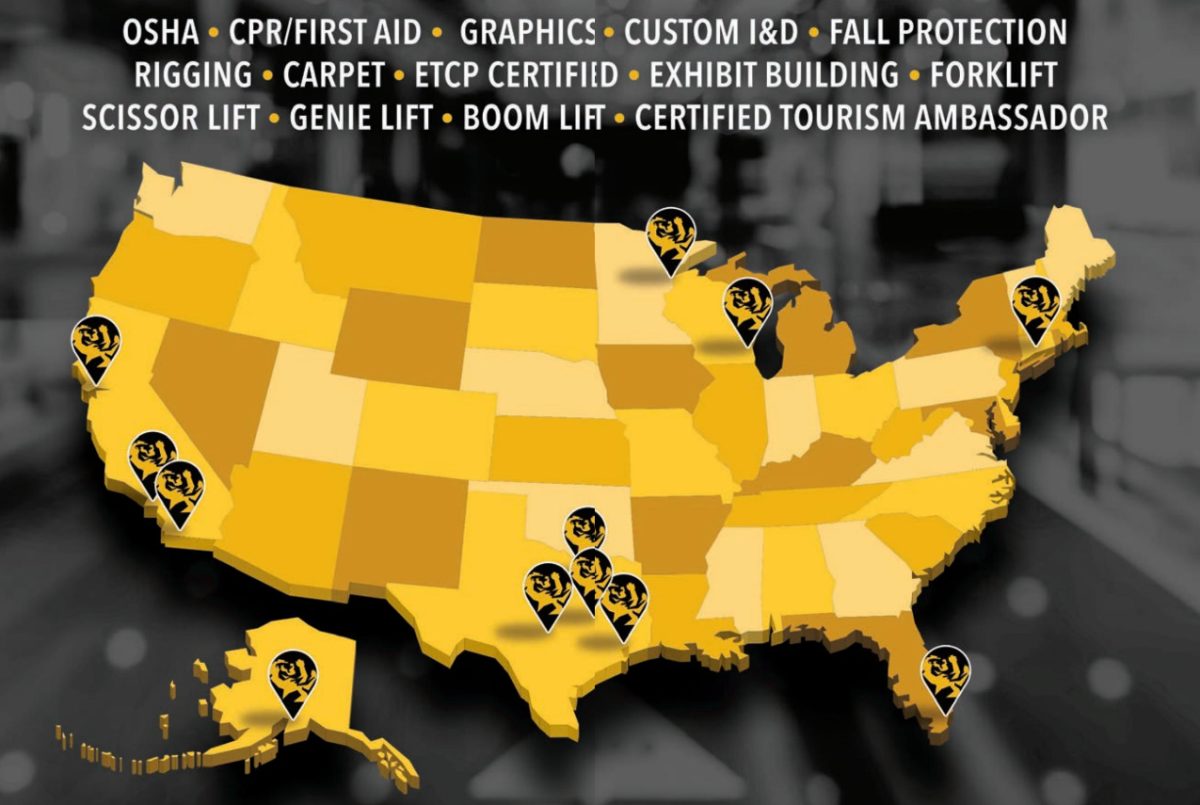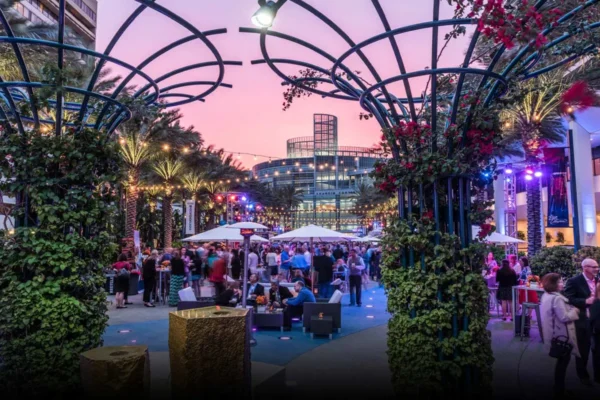by Thea Engst
Read in Q4 Issue HERE .
Many people come to a trade show as a vendor; many come to help create the trade show itself, and even more come to shop around and see what’s for sale or soon to be for sale. But behind the scenes of the people selling, looking to buy, and the people assembling and creating, are the people representing the builders, the painters, the decorators, and more. That’s where unions like the International Union of Painters and Allied Trades come in to play.
The International Union of Painters and Allied Trades, or IUPAT, was founded in the 19th century along with so many other unions in America to represent the working-class, their families, and their rights in the workplace. Since then, the IUPAT has only continued to expand throughout the United States and Canada, and to work to help the middle-class and their families to continuously have living wages, reasonable work hours, and safe working conditions.

A brief history
The IUPAT first started out informally, in the period following the Industrial Revolution and the boom in the need for a new breed of workers at a magnitude America had never seen before. Eventually, this new union grew into a formalized union called The Brotherhood for Painters and Decorators of America in 1887. As a fully formed union in 1887, the Brotherhood for Painters and Decorators began growing quickly and not just that—they were achieving meaningful results. That growth only continued over the decades, and by 1970, the union was renamed the International Union of Painters and Allied Trades, to encompass all the working-class people they now represented. Today, it is an impressive 136 years old with no sign of slowing down.
Benefits offered
To name a few, IUPAT offers a variety of benefits, including pensions, medical insurance, retirement plans, and life insurance. They also founded a program for children in 2001, Painters and Allied Traders for Children’s Hope, or PATCH, helps support foundations that help children with education, athletics, and medical care. They even help with scholarships.
Where is IUPAT now?
We sat down with the Business Representative for Local 1175 for tradeshows, Juan Garcia, who’s been with IUPAT since 1989, to talk about IUPAT’s history, its present, and its future. “The IUPAT represents workers all across the U.S. and Canada,” Garcia told us proudly. “We represent painters, glaziers, drywall finishers, metal polishers, floorers, paper hangers, trade show [employees], sign and display creators, and public sector employees.” (They’ve come a long way from just representing painters and decorators in 1887!) And Garcia has a tremendous amount of pride in his work and accomplishments with the IUPAT over the last 34 years. He told us, “There’s nothing more gratifying than being able to help members and establish their careers in this industry.”
More than 160,000 people are represented by IUPAT in Canada and America as of 2023. That includes people who are active in the workforce and those that are retired. That’s an impressive pool of people to represent any union. It really illustrates the potential for having a positive impact on the working-class citizens of Canada and America.
Becoming a part of IUPAT
Garcia sort of wandered into his work with IUPAT in a fortunate twist of fate when he decided to work at a boat show to make extra money back in 1988. “I was working in the medical industry as a respiratory therapist,” he said, “I felt that this was a better fit than the medical industry—and I’ve been here ever since!” Garcia told us. Today, he works with a team of about 300 employees and works arduously to continue to recruit and hire for the future of trade show union work and the demographic of people they represent. “There is a lot of work that’s taking place right now to get us ready for the next five to 10 years,” Garcia explained. “We have a full-blown apprenticeship program now, and we’re recruiting a lot of people into the program.”
The COVID-19 pandemic that began in 2020 did slow the team’s growth at Local 1175, but only to a degree. Garcia told us, “We did lose some members due to the pandemic. Some that retired, some of them found something else to do, but we’ve been diligently training and recruiting through career days, high schools’ job fairs.” Getting the younger generation educated on the value of union work and unions in the workplace is extremely valuable, and the IUPAT prioritizes spreading awareness for the future generations so that their work can continue to protect the people of the working-class and their families.
The future of IUPAT
So aside from the apprenticeship program, spreading awareness to the next generation on the value of unions, and fighting for the working-class daily—what’s on the horizon for this invaluable union? Garcia is hopeful and rightfully so. “Our jurisdiction has seen a 20% rise in shows,” Garcia told us. “We have new facilities that are expanding, and as we prepare for the workload, we are working closely with trade show representatives and our contractors around the nation to make sure that we’re all on the same page moving forward.” In other words, IUPAT—and maybe Juan Garcia too—never sleeps.
We had to ask, as we like to, if Garcia had anything he’d like readers to walk away with knowing about IUPAT and his impressive 34 years of work with them. Unsurprisingly, it was all about his and IUPAT’s dedication to the cause of working-class people. “In a nutshell, we just want everybody to know that we don’t sit still, we work hard, and we work diligently to recruit and make sure that we stay involved in the industry.”
So, after 136 years of caring for the working-class, fighting for them to have livable wages, manageable hours, and safe working conditions, IUPAT shows no signs of slowing down. In fact, quite the opposite. Their website, we feel, says it best: “Recognized as one of the most active unions in the labor movement, IUPAT members help shape their communities in many ways: through an abiding commitment to service, by fighting passionately for workers’ rights that benefit all working families, and through effective and aggressive political mobilization.”
































